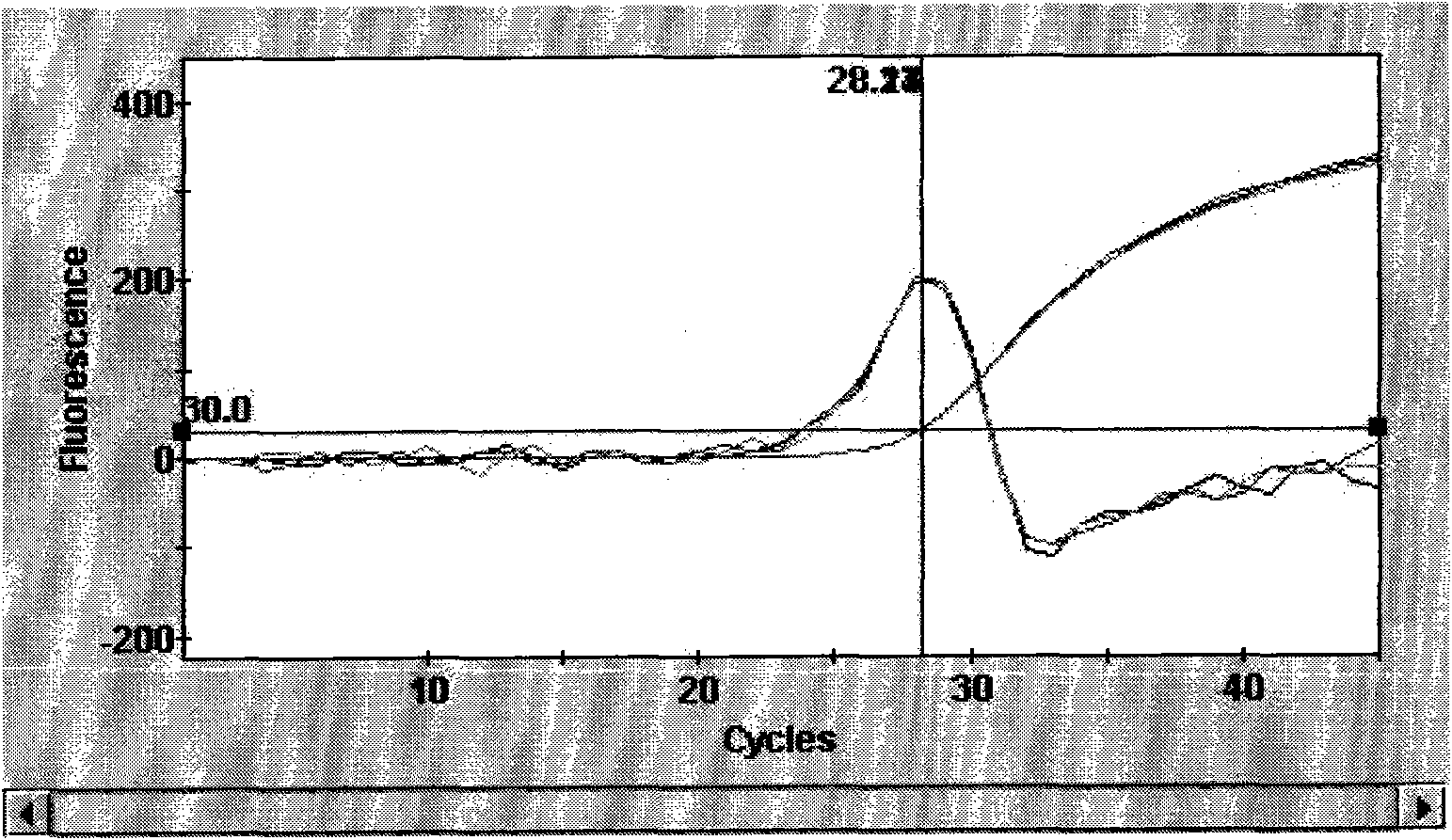Novel Ebola virus fluorescent quantitative PCR (Polymerase Chain Reaction) detection method and system
An Ebola virus, fluorescence quantitative technology, applied in the direction of fluorescence/phosphorescence, determination/inspection of microorganisms, biochemical equipment and methods, etc.
- Summary
- Abstract
- Description
- Claims
- Application Information
AI Technical Summary
Problems solved by technology
Method used
Image
Examples
Embodiment Construction
[0032] The working principle of the new method for Ebola virus fluorescent quantitative PCR detection of the present invention is to use the qualitative analysis of the change of the fluorescent signal to detect in real time the change of the amount of amplification product in each cycle in the PCR amplification reaction, and to pass the relationship between the Ct value and the standard curve Quantitative analysis of the starting template. The present invention also relates to all the contents contained in the above-mentioned detection system.
[0033] The method includes the following steps:
[0034] 1) Design primer probes;
[0035] 2) Select fluorescein according to the instrument;
[0036] 3) Synthetic primers and probes;
[0037] 4) Prepare positive plasmid standard;
[0038] 5) run PCR;
[0039] 6) Data analysis;
[0040] 7) Extract viral RNA for system verification.
[0041] 1. Design of primers and probes
[0042] According to the name of the gene to be studie...
PUM
 Login to View More
Login to View More Abstract
Description
Claims
Application Information
 Login to View More
Login to View More - Generate Ideas
- Intellectual Property
- Life Sciences
- Materials
- Tech Scout
- Unparalleled Data Quality
- Higher Quality Content
- 60% Fewer Hallucinations
Browse by: Latest US Patents, China's latest patents, Technical Efficacy Thesaurus, Application Domain, Technology Topic, Popular Technical Reports.
© 2025 PatSnap. All rights reserved.Legal|Privacy policy|Modern Slavery Act Transparency Statement|Sitemap|About US| Contact US: help@patsnap.com



